

Soldiers at Soldiers at Gallipoli Gallipoli
 ByKimberleyMaggs
ByKimberleyMaggs


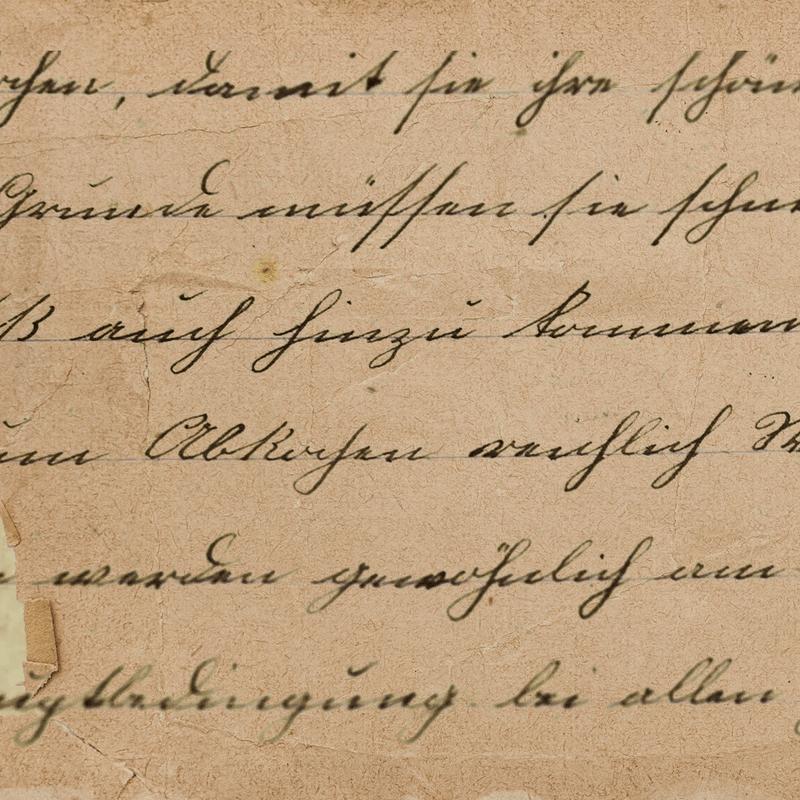
Introduction

World War 1 started on July 28th, 1914, and ended 11th November 1918. The countries involved in World War 1 were Serbia, Russia, Montenegro, France, Belgium, Japan, Great Britain which Includes Canada, Australia, New Zealand, India, South Africa & other British dominions, and colonies. Some key events of World War 1 that Australia was involved in include: The Gallipoli campaign 19 February 1915 to 9 January 1916, Battle Messines 7-14 June 1917, Sinai and Palestine Campaign taking place between January 1915 and October 1918, Western front 1916-1918, battle of Bullecourt 11 April 1917, Spring offensive 21 march 1918, One hundred day offensive 24 and 25 April 1918, Battle of the Menin Road Ridge 20 to 25 September 1917, Third battle of Ypres 31 July 1917.
MAIN causes of WW1 MAIN causes of WW1
Militarism
Militarism is when a government believes it is best to have a military compatibility and be prepared and ready to use it to defend or gain land against others. Great Britan and Germany were the world leaders of militarism and had the largest military.


Alliances
Alliances occur when two or more countries/nations agree to support one another during war. There were two alliances I World War one. The Triple Alliance, which included Germany, Austria-Hungary and Italy; and the Triple Entente, which included England, France, and Russia.
Imperialism
Imperialism is when different countries invade other nations to gain power over them. Colonizing different unions.

Nationalism is when a nation has strong pride in one’s country. Citizens are loyal and devoted to their nation whilst glorifying it above others. Great Britan and Germany were the perfect examples of this.

Involvment and enlistment
Reasons soldiers enlisted/were recruited include they needed regular pay, wanted an adventure or wanted combat, wanted to get away from there normal life or wanted to do their duty in serving the British Empire. The reason Australia was involved in World War 1 was because we pledged full alliance to Britan and Britan was a part of the war, so Australia and our troops had to assist them. In doing so out of the 416,809 Australian men who enlisted (38.7% of the male population) 58,961 of them died, 166,811 were wounded and 4098 went missing and/or were made prisoners of war. The population of Australia in 1914 was 4 million, after the war in 1918 the population rose to 5 million. Propaganda in World war one was the spreading of nformation or rumour to help or sabotage a nation, person or cause. Propaganda was used for fundraising, to build hared of enemy nations or to encourage enlistment in the war. Propaganda posters were made to get people o enlist and make them feel guilty for not enlisting.
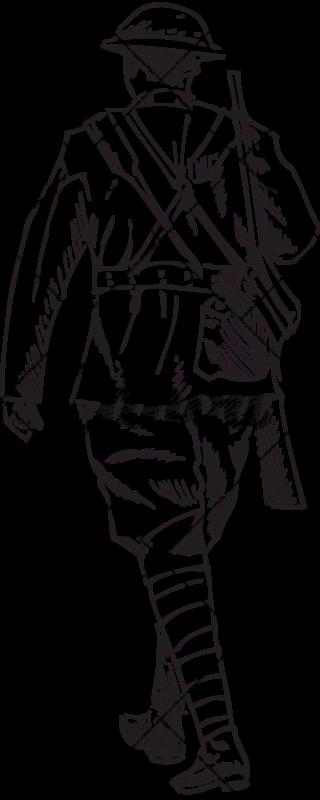


Propaganda posters

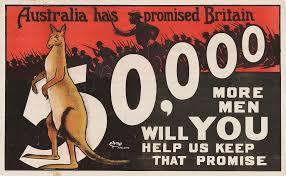
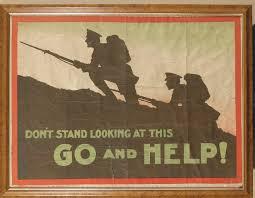





Soldiers at Gallipoli
The group I’ve selected is soldiers at Gallipoli. Approximately 60,000 Australians fought at Gallipoli; around 8000 of those Australians were killed and 18,000 wounded. Possibly as many as 70 of those who fought at Gallipoli were Aboriginal and Torres Strait Islander people. Anzacs were deployed to Gallipoli to block any Turkish troops retreating from the south and reinforcements coming from the north. The plan was for the Anzac and British troops to meet up for a final push across to the Dardanelles. These plans were pulled to a halt as the Turkish troops annihilated Australian troops making them evacuate 8 months later.


Australian troops arrived at Gallipoli on the 25th of April 1915 and left in secret on the 20th of December 1915. When Australian soldiers were in Gallipoli the conditions were filthy. Filled with sickness, disease, and death. Whilst undergoing constant enemy fire. Troops on Gallipoli found themselves dirty, thirsty, constantly digging and tunnelling, and living in cramped dugouts. Having only been there for eight months, every second felt like hell. Soldiers were left with trench foot, lice and ‘shell shock’ or commonly known as PTSD.


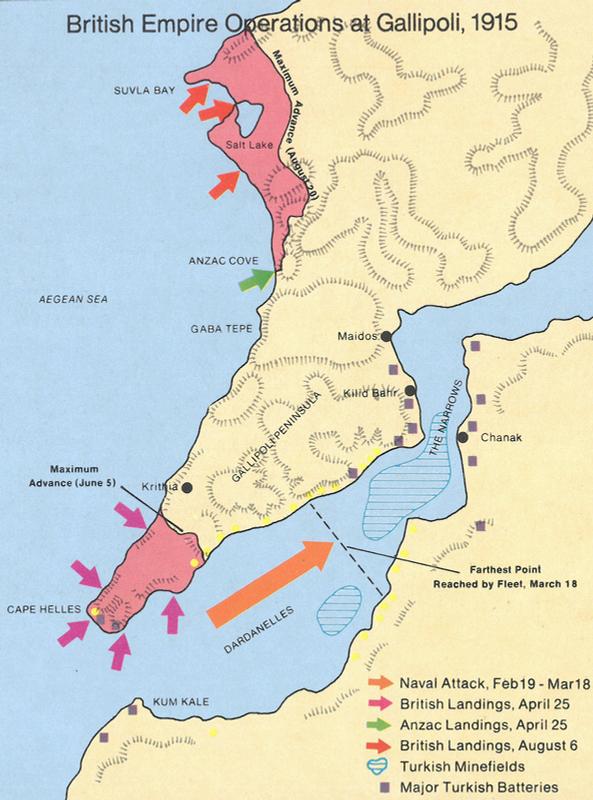


Gallipoli Peninsula Ottoman Turkey



Out of the 60,000 Australian soldiers that served at Gallipoli, I have chosen William Throsby Bridges to do my case study on. William Throsby Bridges was born on the 18th of February 1861. He was born in The United Kingdom Scotland, Greenock, but later moved to Australia in 1879 at 18. In 1886 he applied for and obtained a commission in the New South Wales Permanent Artillery and was stationed at Middle Head, Sydney after failing to graduate Royal Military College at Kingston, Canada in 1877. In 1899 he volunteered for service in the Boer War, South Africa. In 1914-08 William took command of the 1st Australian Imperial Force and was promoted to the rank of major general. On the 15th of August 1914 William made the decision to enlist to World War one, then embarking on the 21st of October the same year. He and his troop arrived at Egypt on the 30th of November 1914. On the 25th of April 1915 William was sent to Gallipoli where he would take his last breaths. On the 15th of May 1915 Sir William Throsby Bridges was shot and wounded by a sniper, 3 days later he died from his wounds. His Body was brought back to Australia for burial on Mt Pleasant, Canberra.

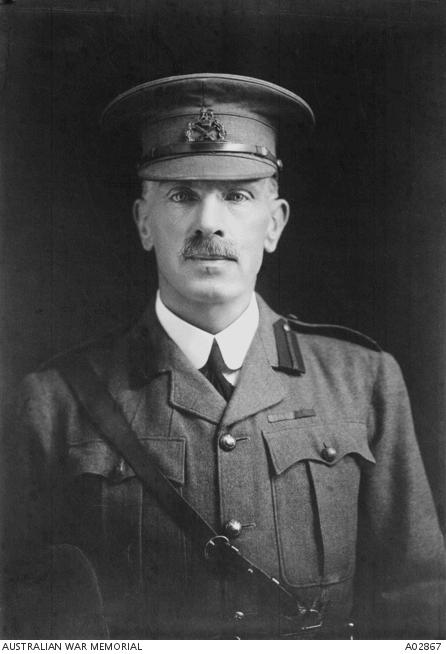
 William Throsby Bridges
William Throsby Bridges

ABRIEFHISTORYOF
WILLIAM THROSBY BRIDGES

1877
Entered Royal Military College at Kingston, Canada
18FEBUARY1861
William was born in Greenock Scotland

1879
Came to australia
1886
Applied for and obtained a commission in the New South Wales Permanent Artillery and was stationed at Middle Head, Sydney
1914
Took command of the 1st Australian Imperial Force and was promoted to the rank of major general.
1899
Volunteered for service in the Boer War, South Africa
15AUGUST1914
Date of enlistment
21OCTOBER1914
Date of embarkation
30NOVEMBER1914
1st Division arrived in Eygpt.
25APRIL1915
1st Division landed at Gallipoli.
18MAY1915
Date of death Died of wounds His body was brought back to Australia for burial on Mt Pleasant, Canberra
15MAY1915
Date wounded shot by a sniper
TheonlyhorsetoreturnfromtheFirst WorldWar
In World War One 136,000 Australian horses were sent overseas for use by the Australian Imperial Force and the British governments. One horse from the 136,000 made it back to Australia. His name was Sandy. Sandy belonged to Major General Sir William Bridges, who died on a hospital boat returning from Gallipoli. He had endured wounds from a sniper at the shores of Gallipoli. Sandy was one of 6,100 horses who had embarked for Gallipoli. But not many were put ashore, as Lieutenant General Sir William Birdwood decided that they were not needed or there wasn’t enough room for them. On 5 May Birdwood decided to send the horses back to Egypt. From 1 August 1915 Sandy was in under the care of Captain Leslie Whitfield, an Australian Army Veterinary Corps officer. Sandy remained in Egypt until he and Whitfield were transferred to France during March 1916. In October 1917 Senator George Pearce, Minister for Defence, called for Sandy to be returned to Australia. In May 1918 the horse was sent from the Australian Veterinary Hospital at Calais to the Remount Depot at Swaythling in England. After three months at the veterinary hospital, Sandy was declared free of disease. Sandy saw out the rest of his days at the Remount Depot. Although he was originally intended to go to Duntroon, his increasing blindness and debility prompted the decision to have him put down, in May 1923. His head and neck were mounted and became part of the Memorial's collection. Sandy was displayed for many years, although is currently not on exhibition as he started to deteriorate through aging.




Bibliography
Australian War Memorial (2016). Major General William Throsby Bridges. [online] Awm.gov.au. Available at: https://www.awm.gov.au/collection/P11013172.
Australian War Memorial (2019). The Australian war memorial. [online] Awm.gov.au. Available at: https://www.awm.gov.au/. digital-classroom.nma.gov.au. (n.d.). Australian troops land at Gallipoli | Australia’s Defining Moments Digital Classroom | National Museum of Australia. [online]
Available at: https://digitalclassroom.nma.gov.au/defining-moments/australiantroops-landgallipoli#:~:text=Approximately%2060%2C000%20Austra lians%20fought%20at.
Editors, H. com (2021). World War I Battles: Timeline. [online] HISTORY. Available at:
https://www.history.com/topics/world-war-i/worldwar-i-battles-timeline.
